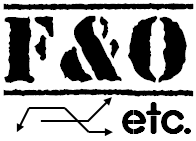|
|
Out of the Money Call Put Options and how the Moneyness of ATM options varies
What is Out of the Money Option or ATM Option? The moneyness of an option is determined by the "relative" values of strike price (Exercise price) and the underlying's spot price.By definition, If the exercise price of a call option is higher than the present market (or spot) price of the underlying stock (or index), then the call is said to be Out-of-the-money option. Going by the nomenclature explanation, the buyer of this call option has the right to buy the stock at a price which at present is higher than the price he would have to pay to buy the stock in the stock market, so this kind of option is actually worthless for him as he will not be paying a hihg price for the option. Rather he will prefer to buy it for less from the stock market. Hence the option, at this moment, is worthless for him- he is "Out-of-the-money".
So let's take an example of Citibank stock option. Suppose Mr. X has bought the Citibank call option at $2 and the Citibank call option has a strike price of 50 and expiry as 30-June-2010. Suppose that the underlying spot price , i.e., the actual stock price of Citibank is currently lower than the strike price of the option, i.e. $45 per share.
As per the definition mentioned above, In this case, the strike/exercise price of the option is $50 which is higher than the present market price of the underlying ($45). Hence this particular option is said to be Out of the Money.
In this case the buyer has the right to buy the options at $50 per share (which is the strike price of the option), but since he can buy the same Citibank stock in the open market at a lesser price ($45), he will not exercise his option. Hence, this situation loss-making to the Buyer, so it is called Out of the Money Call Option.

Another way to look at the moneyness is the profitability in the pay off function for this position. As can be seen in the following payoff chart, the call option is loss making to the buyer. Hence it is Out of the money.
Same thing goes for the buyer of the Put Option, but on the reverse side of the payoff function. Say Mr. X had bought a Put Option on Citibank stock which has the strike price of $40, which gives him the right to sell the Citibank stock at $40. As the current market price of the actual Citibank stock is at $45, Mr. X, as a buyer, will NOT exercise the option, because he has the right to sell the Citibank stock at a lower price of $40, rather than the current spot price of $45. He can as well sell at the higher price of $45. Hence, here again, the buyer of Put option is in loss, so it is called Out of the Money Put Option

Another way to gauge the moneyness of a Put option is to see whether the current postion is profitable for the buyer or not. As displayed in the payoff graph for the put option, the underlying price is higher than the strike price, so the put option is showing loss to the buyer. Hence it is Out of the money.
Please note that moneyness of options keep changing as the time passes by, and as the spot price of underlying keeps changing. Although the stike price of option usually remains contant during the lifetime (unless there is some corporate action), but something which is in the money today, may be out of money tomorrow. See the related articles for other Moneyness - In of the Money and At the Money

0 Comments: Post your Comments
Wish you all profitable derivatives trading and investing activities with safety! = = Post a Comment